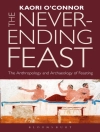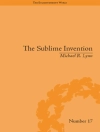Sensationalistic stories have attracted readers for as long as reading has been a popular form of entertainment. Readers have been frightened, revolted, yet fascinated by stories of death, thievery, kidnapping, murder, rape, scandal, love triangles, and colorful miscreants. Starting in the 1830s this morbid interest in lurid stories fueled the unprecedented growth of sensationalist newspapers that titillated and shocked their many readers. This study of sensationalism describes how newspapers added lurid details to their coverage of news events in an effort to attract as many readers as they could. Employing hyperbole and exaggerated details, they meant to grab the attention of the reader and keep him or her reading. For the next hundred years this form of journalism continued, later spilling over into radio and television news. Along the way, the "yellow journalism" wars of the 1880s and 1890s produced bold headlines, eye-catching illustrations, exaggeration of news events, and even false quotes and misleading information. Sensational reporting continued with muckraking reporting in the early 1900s as journalistic crusaders worked to expose municipal corruption, corporate greed, and misconduct in American business.
Agnew Jeremy Agnew
Sensational News [EPUB ebook]
The Rise of Lurid Journalism in America, 1830-1930
Sensational News [EPUB ebook]
The Rise of Lurid Journalism in America, 1830-1930
ซื้อ eBook เล่มนี้และรับฟรีอีก 1 เล่ม!
ภาษา อังกฤษ ● รูป EPUB ● หน้า 258 ● ISBN 9781476652139 ● สำนักพิมพ์ McFarland & Company, Inc., Publishers ● การตีพิมพ์ 2024 ● ที่สามารถดาวน์โหลดได้ 3 ครั้ง ● เงินตรา EUR ● ID 9373306 ● ป้องกันการคัดลอก Adobe DRM
ต้องใช้เครื่องอ่านหนังสืออิเล็กทรอนิกส์ที่มีความสามารถ DRM












